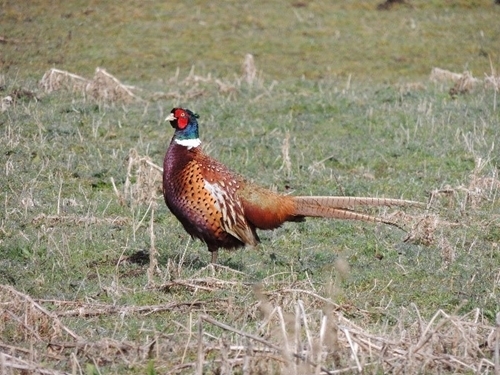 Research and monitoring is important at Auchnerran as it is crucial to monitor and understand the impact of farming on biodiversity. Research will help to influence farm management decisions, especially regarding sensitivity towards wildlife. For the first two years (2015 & 2016) of the project, base-line studies were conducted in order to establish which habitats and species were present, and where possible their abundance and diversity.This baseline survey also provided data with which we can compare future findings, so we can monitor changes in biodiversity over time and investigate what might cause them.
Research and monitoring is important at Auchnerran as it is crucial to monitor and understand the impact of farming on biodiversity. Research will help to influence farm management decisions, especially regarding sensitivity towards wildlife. For the first two years (2015 & 2016) of the project, base-line studies were conducted in order to establish which habitats and species were present, and where possible their abundance and diversity.This baseline survey also provided data with which we can compare future findings, so we can monitor changes in biodiversity over time and investigate what might cause them.
Due to the historically low intensity agricultural management of the farm, combined with high quality legal predator control, a wealth of biodiversity is present.
The baseline monitoring covered a diverse array of groups, from invertebrates (in grassland, soil and in our ponds), game (including black grouse - in collaboration with Dinnet moor, brown hares and pheasants), songbirds, waders, raptors, mammals (e.g. voles, red squirrel, pine marten and foxes), to reptiles (slow worms) and amphibians (toads; lots of toads!). This highlighted not only the broad range of wildlife present on the farm, but its above-average abundance especially regarding songbird and wader populations.
Members of the thrush family (blackbird, song thrush and mistle thrush) were found at higher densities at Auchnerran than on a reference area nearby, as were all waders. We average around 70 pairs of lapwing, 20 pairs of oystercatcher, 12 pairs of curlew, an unknown but large number of snipe and roding male woodcock which average 5-6 males per 100 ha each spring. These findings have led to specific research projects on lapwing, curlew and thrushes.
We do not still monitor all the groups covered in the baseline surveys on an annual basis because that is simply too much now our research programme is expanding. Instead, we focus on fewer key groups: soil invertebrates, game species, general farmland birds, raptors, waders, thrushes, rabbits and some mammals like red squirrels and foxes. We have more recently added mud snails to this list because of their important role in the sheep-fluke life-cycle as well as tick counts on sheep which graze the moor.

A very important function of this ongoing monitoring is to keep track of population trends and habitat use, so we can identify early problems, such as declines in bird or invertebrate abundance, or avoidance of certain fields by key groups, for example. This may indicate that factors like changes in land-use or visitor behaviour may be having a negative impact and suggest that we need to investigate ways to mitigate this. Such information could also prove useful to other farmers and those reviewing support mechanisms such as agri-environment schemes.
For example, our surveys suggest that the distribution of lapwing nests has changed, with some fields that previously occupied subsequently abandoned. This is something we will continue to monitor because it might be related to agricultural improvements, as most of the avoided fields were agriculturally improved (e.g. reseeded) prior to abandonment.